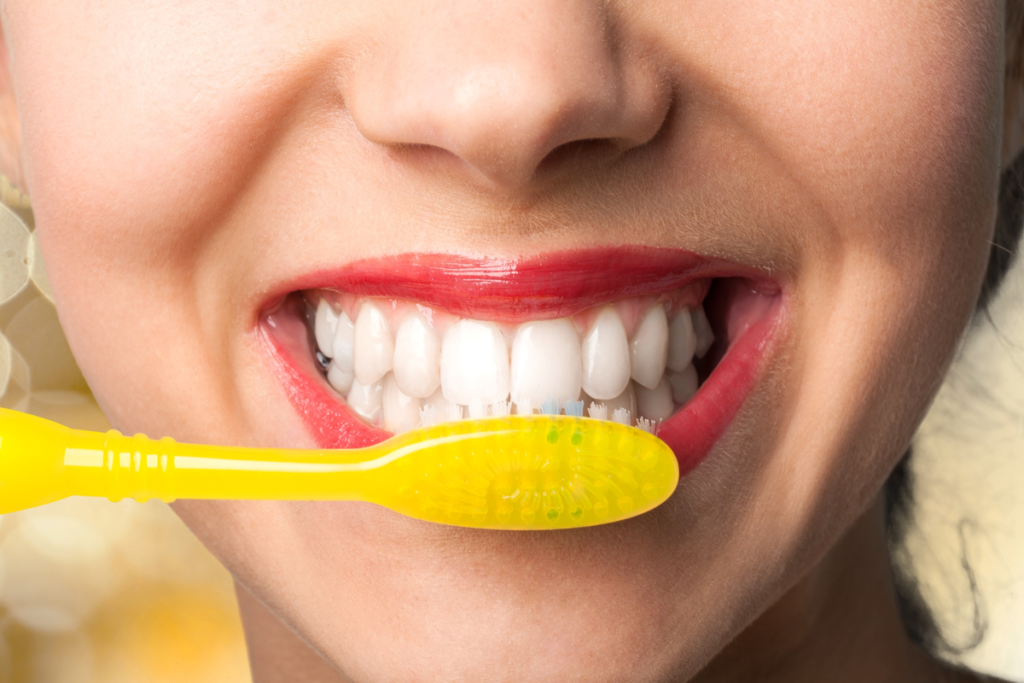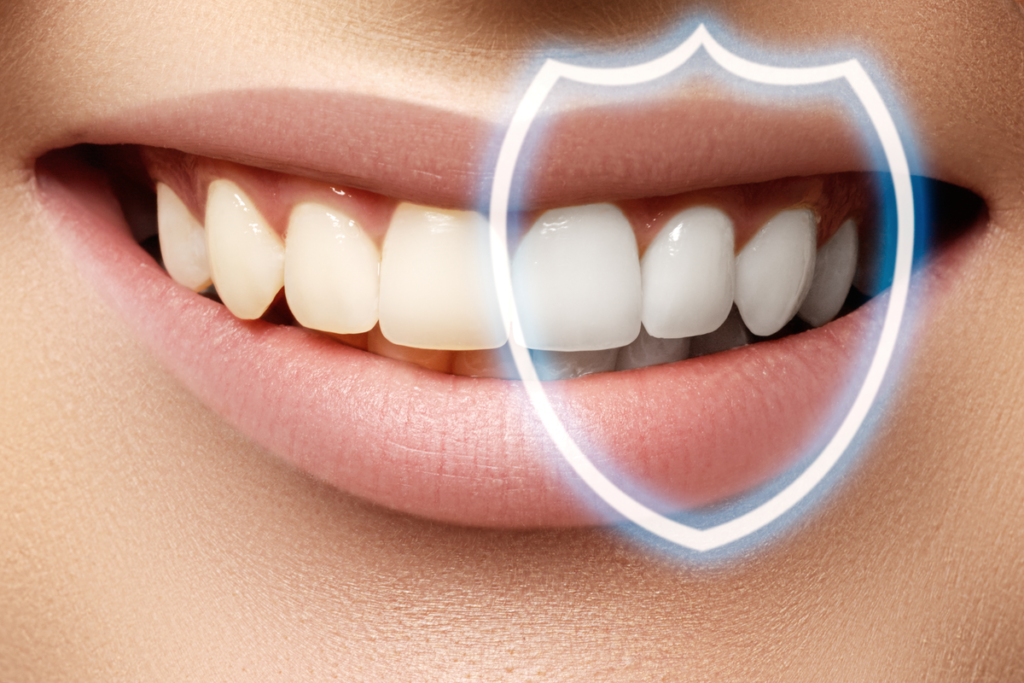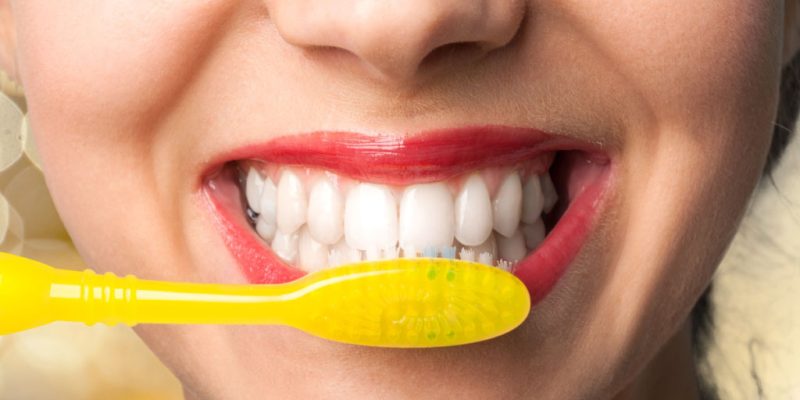Nowadays, the desire to meet certain beauty standards can lead to some people putting their health at risk. Such is the case of those suffering from bleachorexia, a condition related to the health and appearance of the teeth. Those who suffer from it usually frequently undergo cosmetic treatments in order to achieve a whiter smile.
Wanting a healthier and more aesthetic smile doesn’t have to be a problem, but there are limits. In fact, although it may seem like harmless behavior, obsessing over having white teeth can be dangerous. In this article, you can learn more about this condition and what measures can be taken to prevent it.
Bleachorexia
The term bleachorexia is a neologism that comes from ‘bleach’ and ‘rexia’ (tendency to, craving). In this sense, it relates to the desire for bleached white teeth. In fact, it signifies an obsessive behavior related to teeth color, and those who suffer from it worry excessively about the shade of their teeth.
These people will often seek to satisfy their desire for exceptionally white teeth. For example, they visit their dentist frequently for whitening treatments. In fact, in severe cases, they may even try and whiten their teeth themselves,
We should mention that these types of measures are usually quite damaging to the enamel of the teeth. Therefore, if treatments are applied intensively and without medical supervision, it’s extremely likely that, in the long run, the individual will experience problems. Some of the most common are:
- Gingivitis or inflammation of the gums.
- Changes to tooth enamel.
- Problems perceiving flavors in a normal way.
- Tooth loss.
- Hypersensitive teeth.

Causes
Bleachorexia isn’t classified as a mental disorder in any psychiatry or psychology manuals. Consequently, it hasn’t been specifically studied by any researchers in these fields. However, it’s thought that the condition could be related to body dysmorphias such as anorexia or vigorexia.
Body dysmorphia (BDD) is an alteration that affects an individual’s perception of their own body. For example, in anorexic patients, dysmorphia causes them to feel overweight, even when their body mass index is actually lower than recommended.
According to one particular study, this condition occurs between 0.7 percent and 2.4 percent of the general population. The same study mentions that the figures are higher among those who seek aesthetic treatments (Vashi, 2016).
Another work by Rodríguez et al. (2019), evaluated the presence of body dysmorphia in the field of dentistry. In their results, they explained that patients who visit the dentist for implants, prosthodontics, and other cosmetic reasons obtain higher BDD scores. In addition, the scores are higher in women than men.
The foregoing seems to indicate that body dysmorphia could be a common disorder among those with bleachorexia. In fact, these patients may well have a distorted perception of their teeth. This often results in feelings of dissatisfaction and low self-esteem. For this reason, they may seek risky whitening procedures to meet their unrealistic expectations.
Contributory factors
Body dysmorphia can be reinforced by a number of external factors. For instance, there are many celebrities who appear in the media showing off dazzling smiles. However, it would be far better if less unrealistic ideals were created surrounding the idea of what constitutes beautiful teeth,
In addition, there’s a large amount of advertising for homemade whitening products. Furthermore, as part of their marketing strategies, these companies often use methods that promote customer need. Therefore, advertisements could contribute by not promoting the idea that white teeth are a necessity.

Prevention
There’s nothing wrong with wanting to have a healthier and more aesthetically pleasing smile. However, you must be wary of extremes. To this end, there are several things you need to take into account in order to prevent bleachorexia and its consequences.
Firstly, you need to understand that teeth aren’t naturally white. In fact, one of the compounds that make up teeth is dentin, which has a yellow color. Likewise, the tone of the teeth can vary due to genetic factors and eating habits. For example, frequent consumption of coffee, red wine, and similar substances can cause discoloration.
Next, you need to remember that whitening treatments should only ever be performed under expert supervision. If not, you could end up causing irreversible damage to your oral health and the way your teeth look. It’s not recommended to use home treatments, even less with substances that haven’t been formulated for that purpose.
Similarly, remember that white teeth aren’t necessarily synonymous with a healthy mouth. Furthermore, the photos we see of celebrities are often retouched to create a pure white hue. As a matter of fact, in reality, these people’s teeth are unlikely to look like this.
In closing, if you’re concerned about the color of your teeth and feel overly uncomfortable about them, perhaps you should consider psychological help. Because obsessive thoughts concerning your teeth could well be the start of a kind of body dysmorphia.
The post Bleachorexia: The Dangerous Obsession With White Teeth appeared first on Exploring your mind.



















Comments